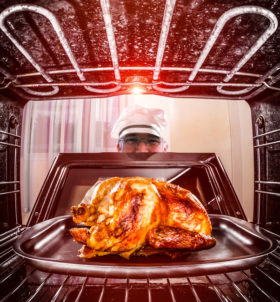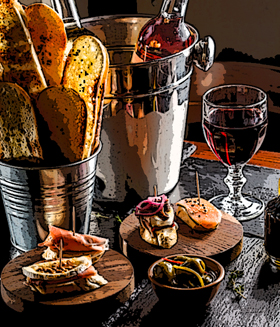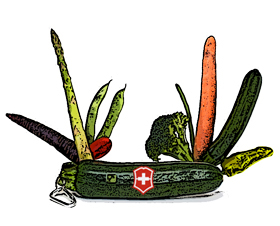Rashomon, the Relativity of Taste & Marquis Fruit Weight
Chapter Five. Part Three.
 In Akira Kurosawa’s classic 1950 film Rashomon, four people witness the same crime but recount drastically different versions of the event. The New York Times reported, “The title quickly entered the English language and became shorthand for the relativity of truth: “the Rashomon effect,” invoked to indicate how witnesses to the same event may see it differently.”¹
In Akira Kurosawa’s classic 1950 film Rashomon, four people witness the same crime but recount drastically different versions of the event. The New York Times reported, “The title quickly entered the English language and became shorthand for the relativity of truth: “the Rashomon effect,” invoked to indicate how witnesses to the same event may see it differently.”¹
I studied Kurosawa’s work in college where my professor summarized Rashomon’s theme with the observation, “Truth is relative; therefore there is no truth.” Since becoming a student of perception I’ve come to believe my professor may have gotten it wrong. It is not truth that is relative; it is perception.
Read MoreSwirl It, Shake It, or Just Let It Be
Chapter Three. Part Nine.
Swirling wine around a wine glass introduces oxygen into the liquid which expedites the release of aromas and takes some of the tension out of firm, young reds. Better wine decanters are designed with maximum surface exposure to facilitate the same thing and some even gently oscillate to further speed the oxidation process. Romancing your wine in this way will make it more approachable but let’s face it, sometimes you want instant gratification and you just don’t have time for all that foreplay.
Thanksgiving With Umami, & The Rest Of The Family
 Thanksgiving is that special time of year when wine and food writers give thanks for the overabundance of tired old clichés they get to recycle. I firmly believe that writers shouldn’t rehash old boring clichés. My job as a writer is to create new boring clichés.
Thanksgiving is that special time of year when wine and food writers give thanks for the overabundance of tired old clichés they get to recycle. I firmly believe that writers shouldn’t rehash old boring clichés. My job as a writer is to create new boring clichés.
The family will be gathering at my house this Thanksgiving which means an assortment of drunkards, criminals and racists will soon gorge themselves on my hard-earned bounty. No wait, that’s not my family, that’s congress. I want to stress in no uncertain terms that my family are not drunkards, criminals and racists; they’re just drunkards.
Read MoreThe Salt Conundrum In Food & Wine Pairing.
Chapter Nine, Part Eight.
 When pairing food with wine, sweet and sour tastes fall neatly into the cancellation category, bitter and piquant are subject to the cumulative effect, and umami is best grouped with neutral pairings, but what about salt? In moderation, salt doesn’t seem to have any conspicuous consequence, but how does excessive saltiness in food affect the taste of wine? To learn how (or if) salt fits into the A. cancellation, B. cumulative or C. neutral categories, I invited some friends over for some organoleptic research. They quickly declined until I told them that meant we were going to eat and drink wine.
When pairing food with wine, sweet and sour tastes fall neatly into the cancellation category, bitter and piquant are subject to the cumulative effect, and umami is best grouped with neutral pairings, but what about salt? In moderation, salt doesn’t seem to have any conspicuous consequence, but how does excessive saltiness in food affect the taste of wine? To learn how (or if) salt fits into the A. cancellation, B. cumulative or C. neutral categories, I invited some friends over for some organoleptic research. They quickly declined until I told them that meant we were going to eat and drink wine.
Good old fashioned research is difficult and time consuming but in the name of conscientious reporting the WASTED team (Wine Snark Academy for Sensory Testing, Evaluation & Debauchery) created a salty feast and drank five bottles of wine because that’s the kind sacrifice we’re willing to make in the name of, umm … science, yeah that’s it, science.
Read MoreThe Neutral Effect In Food and Wine Pairing.
The impact of the chemical reactions taking place in your mouth when you combine food and wine can be very obvious when you’re experiencing the cancellation effect or the cumulative effect, but there’s another interaction between food and wine that’s just as rewarding, but much less pronounced. I call this subtle interplay the neutral effect. I realize that describing a food and wine pairing as neutral sounds sort of, well … neutral, but that doesn’t mean these combinations are boring. Neutral pairings occur when similar flavors come together in a safe, reassuring place, sort of like Switzerland.
Read More




















